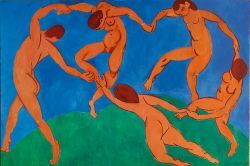 Fauvism is a French avant-garde artistic movement that emerged in the beginning of the 20th century, known mainly for the use of strong and pure colors, Besides works that escaped the rules of reality.
Fauvism is a French avant-garde artistic movement that emerged in the beginning of the 20th century, known mainly for the use of strong and pure colors, Besides works that escaped the rules of reality.
Fauvism was the first avant-garde of the 20th century, however it was not considered an organized movement, as it Unlike the example of other artistic movements, this one did not have a manifesto or a positioning political and social.
Fauvism artists did not interpret art as an intellectual tool or to express political positions, the Fauvists only reproduced the subjectivity of emotions.
The name of this movement originated from the French expression “theyfauves”, which literally means “the savages”, created by the art critic Louis Vauxcelles, during the exhibition at the “Salão dos Independentes”, a reference to the “purism” and intensity of the colors that the artists used in their construction.
the works of van gogh and Gauguin they are some of the main references of Fauvism, as well as African art, especially masks, which had warm and strong colors as their main characteristic.
See also: O meaning of modern art.
Among the artists who stood out as representatives of the Fauvist movement are: Henri Matisse (1869 – 1954), Georges Braque (1882 – 1963), Paul Cézanne (1839 – 1906), Albert Marquet (1875 – 1947), George Rouault (1871 – 1958) and Andre Derain (1880 – 1954).
Some of the works that mark this vanguard are: “Woman with a Hat” (1905, Matisse); “The Dance” (1910, Matisse); “The Port of London” (1906, André Derain); “The Port of Anvers” (1906, Georges Braque); between others.
Characteristics of Fauvism
- Intense use of pure colors (unmixed), with emphasis on yellow, red and blue;
- No commitment to reality;
- Freedom of color (using colors subjectively);
- Moralization, melancholy and sadness were played out in a smooth and cheerful way;
- Colors should convey positive emotions;
- No critical or political intentions;
- Create unrelated to feelings or intellects.
Fauvism in Brazil
The total style of Fauvism has never been adopted by any Brazilian artist, but some typical features and elements of Fauvist works were used by painters such as Artur Timóteo da Costa (1882 – 1923), Mário Navarro da Costa (1883 – 1931) and Inamá José de Paula (1918 – 1999).


